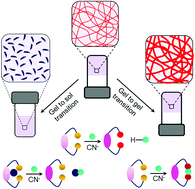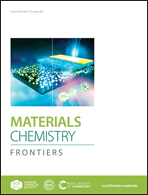Supramolecular gels in cyanide sensing: a review
Abstract
Supramolecular low molecular weight gels have potential in many areas from medicine to optoelectronics. Of the different applications, visual sensing of chemical analytes using gels is a fairly new concept in materials chemistry research. Among various analytes, cyanide is considered the most threatening to the environment and human life because of its acute toxicity. Generally, the detection of cyanide involves the use of sophisticated and expensive instrumentation, which complementary entails highly trained personnel to operate it. In contrast, a gel-based visual detection technique provides an advantage as it is simple, cost-effective, and instrument-free whilst the sensing event can be executed either by observing a phase transformation or by a naked eye detectable color change of the gel. Further, as the gel formation requires a high concentration of gelator (≥10−3 M), for the same chemical compound, the gel phase interactions often exhibit better selectivity for the ionic guests than in the solution state. Despite these facts, limited attempts have been made to synthesize gel-based cyanide sensors. In this review, we discuss an up-to-date summary of various reports on cyanide responsive gels emphasizing the approaches, design principles, and reaction mechanisms. We also highlight the advantages, limitations, and challenges as well as the necessity of further exploration of gels in this domain.

- This article is part of the themed collections: FOCUS: Macrocyclic and supramolecular chemistry and 2021 Materials Chemistry Frontiers Review-type Articles


 Please wait while we load your content...
Please wait while we load your content...